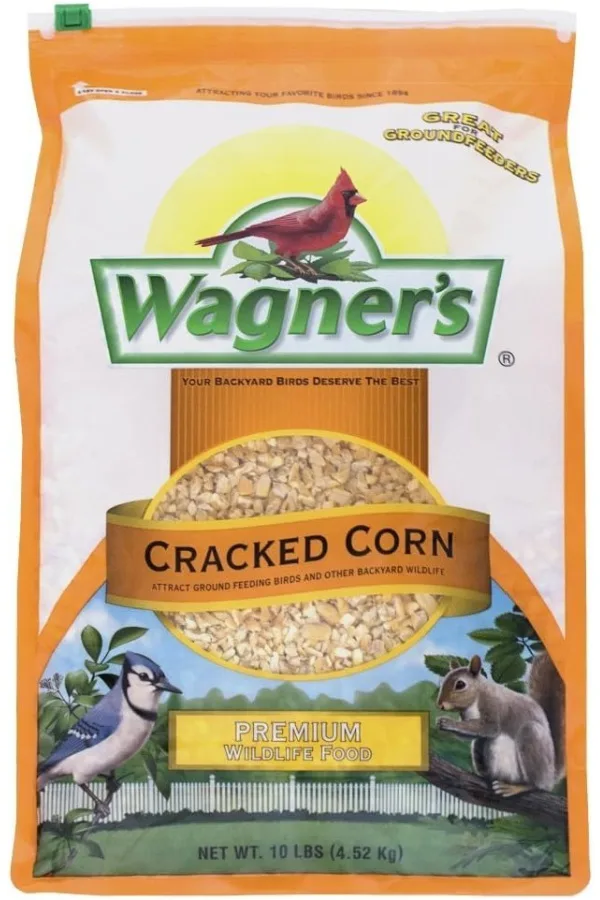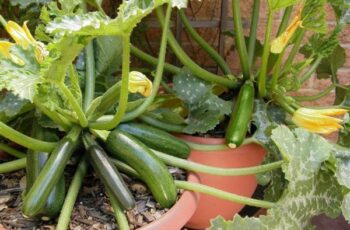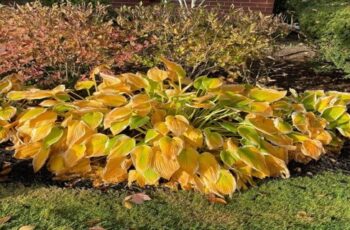Ad Blocker Detected
Our website is made possible by displaying online advertisements to our visitors. Please consider supporting us by disabling your ad blocker.
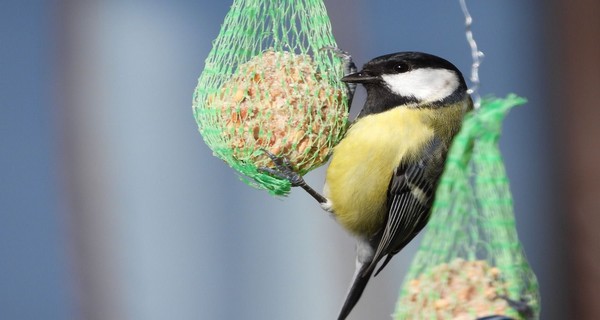
The unfortunate reality for birds is that the drop in available food happens at the worst possible time. Migrating birds desperately need high-energy nutrition to fuel their long flights to warmer climates. Without it, many of them don’t survive the journey.
Meanwhile, the birds that remain up north for the winter also need to bulk up to endure the harsh cold ahead. This is why fall feeding is so important—it helps these birds prepare for the challenging months to come!
How To Feed Birds In The Fall – The Best Feed To Get Birds Ready For Winter!
Keeping bird feeders full during the fall and throughout winter is one of the most effective ways to help birds survive the season. Every year, many birds don’t make it through winter—not just because of food scarcity, but also due to the extreme cold.
Birds rely on body fat and energy from food to stay warm. Unlike other animals like squirrels that stockpile food, birds don’t store their meals. Instead, they go out daily in search of enough food to fuel their bodies and endure the freezing nights. That’s why keeping feeders stocked with high-energy food is so important.
With that said, here are some great options for fall and winter bird feeding!
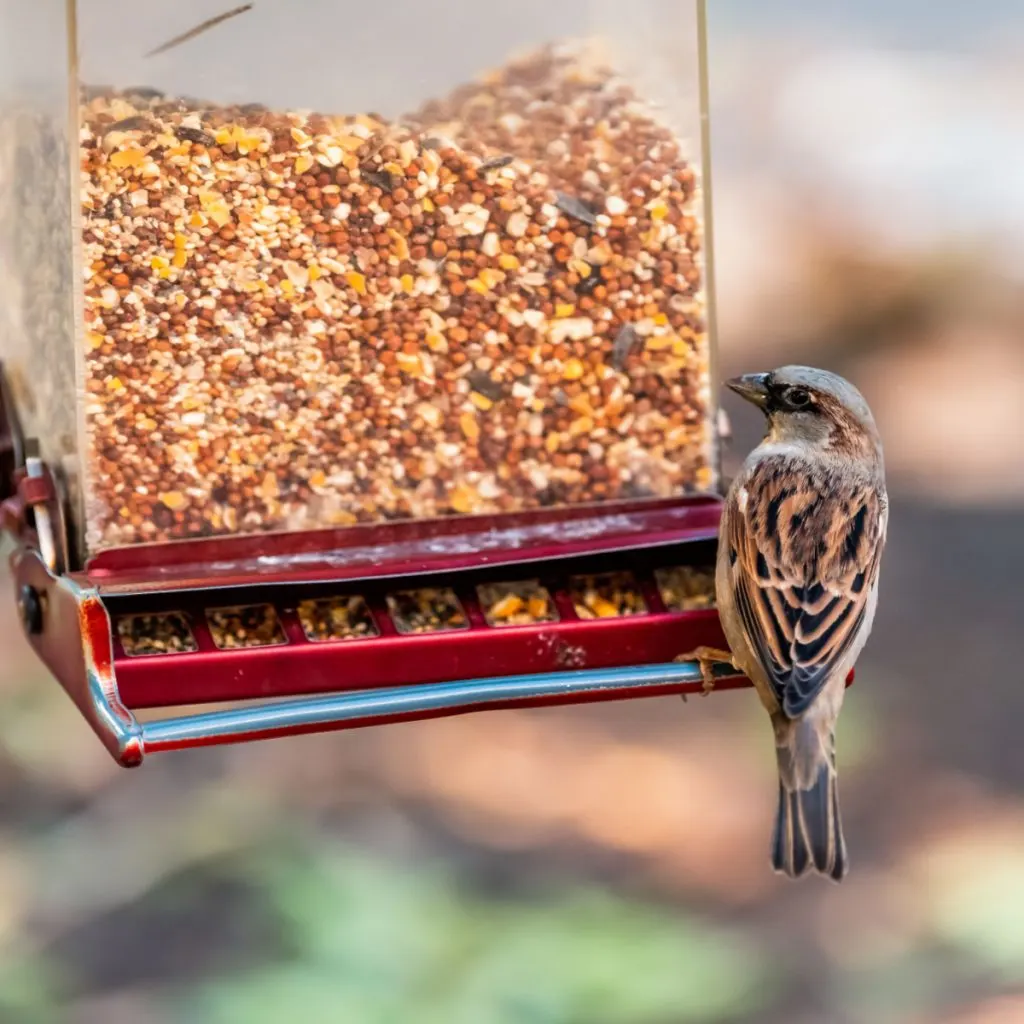
The Best Feed Sources For Birds In The Fall
When feeding birds in the fall and winter, consistency is key. By keeping your feeders regularly stocked, you’re providing nearby birds with a steady, reliable source of energy and nutrition.
On the other hand, if feeders are left empty too often or for extended periods, birds—especially those that have come to depend on the food—can struggle to find the sustenance they need. This can make survival during the colder months even harder for them.
The best approach is to begin with a quality bird seed blend, and then supplement it with high-energy seeds and other feeds to give birds the extra boost they need!
Affiliate Link: Wagner’s Eastern Regional Wild Bird Food Blend, 20-Pound Bag
Adding these high-energy options to your bird feed mix can work wonders in helping birds fuel up, stay warm, and remain healthy throughout the long fall and winter months. Along with a well-balanced bird seed blend, here are some top choices to boost your mix for optimal fall and winter feeding:
Cracked Corn
Black Oil Sunflower Seeds – The Best Feed Sources For Birds In The Fall
Without a doubt, black oil sunflower seeds are the top choice for both fall and winter bird feeding. They’re packed with fat and protein, making them an excellent energy source. Plus, a wide variety of birds, including cardinals and chickadees, absolutely love them!
While regular striped sunflower seeds also provide good nutrition, black oil sunflower seeds are the better option, especially as the season gets colder, because of their higher fat content and appeal to more bird species. Affiliate Seed Link: Wagner’s 76027 Black Oil Sunflower Wild Bird Food, 25-Pound Bag
Millet – The Best Feed Sources For Birds In The Fall
Millet is another fantastic option for fall feeding. As the seed of a grassy grain crop, it’s commonly found in many commercial bird feeds. Millet is perfect for scattering on the ground, as many ground-feeding birds, like sparrows and starlings, enjoy it.
These tiny round seeds are packed with carbohydrates, making them an excellent quick energy source for birds trying to stay warm during the winter months. Affiliate Product Link: Olympus Myco White Proso Millet Seeds for Birds – 10 lbs
Nyjer/Thistle Seeds – The Best Feed Sources For Birds In The Fall
These two tiny seeds are excellent choices for winter feeding. While nyjer and thistle seeds are often mistaken for one another, they actually come from different plants. What they share, however, is a rich source of high-energy nutrition for birds!
Both types of seeds are packed with oil and fat, making them a fantastic option for goldfinches, chickadees, and other birds in need of quick energy boosts. This makes them especially valuable during the colder months when energy demands are high!
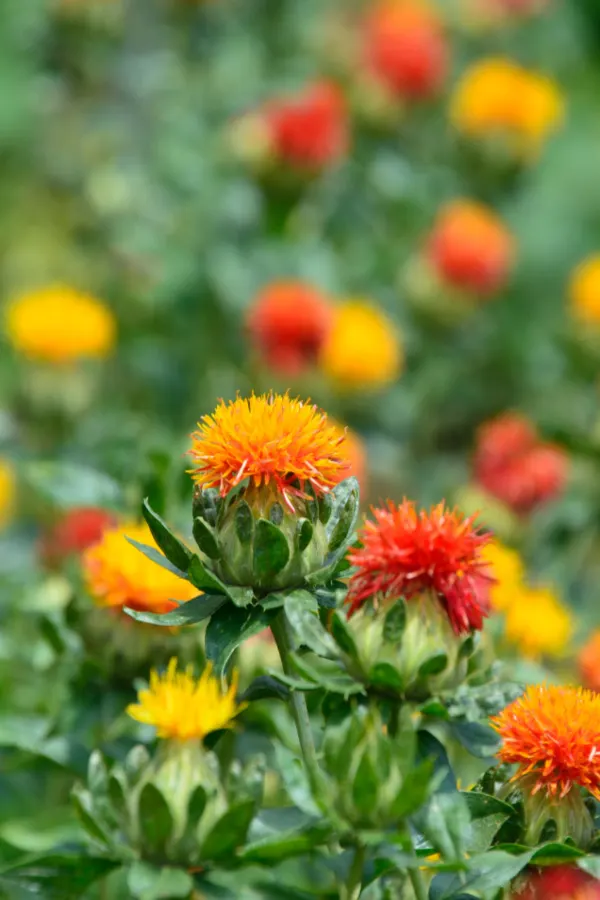
Safflower Seeds- The Best Feed Sources For Birds In The Fall
Safflower seeds are another excellent option packed with high fat and protein content. Although the plant is technically an herb, its thistle-like seeds are rich in energy, making them perfect for birds coping with winter conditions.
These seeds are particularly favored by cardinals, grosbeaks, and chickadees, making them a fantastic addition to bird feed mixes for fall and winter feeding—or really any time of year! Affiliate Seed Link: Armstrong Wild Bird Food Safflower Bird Seed
